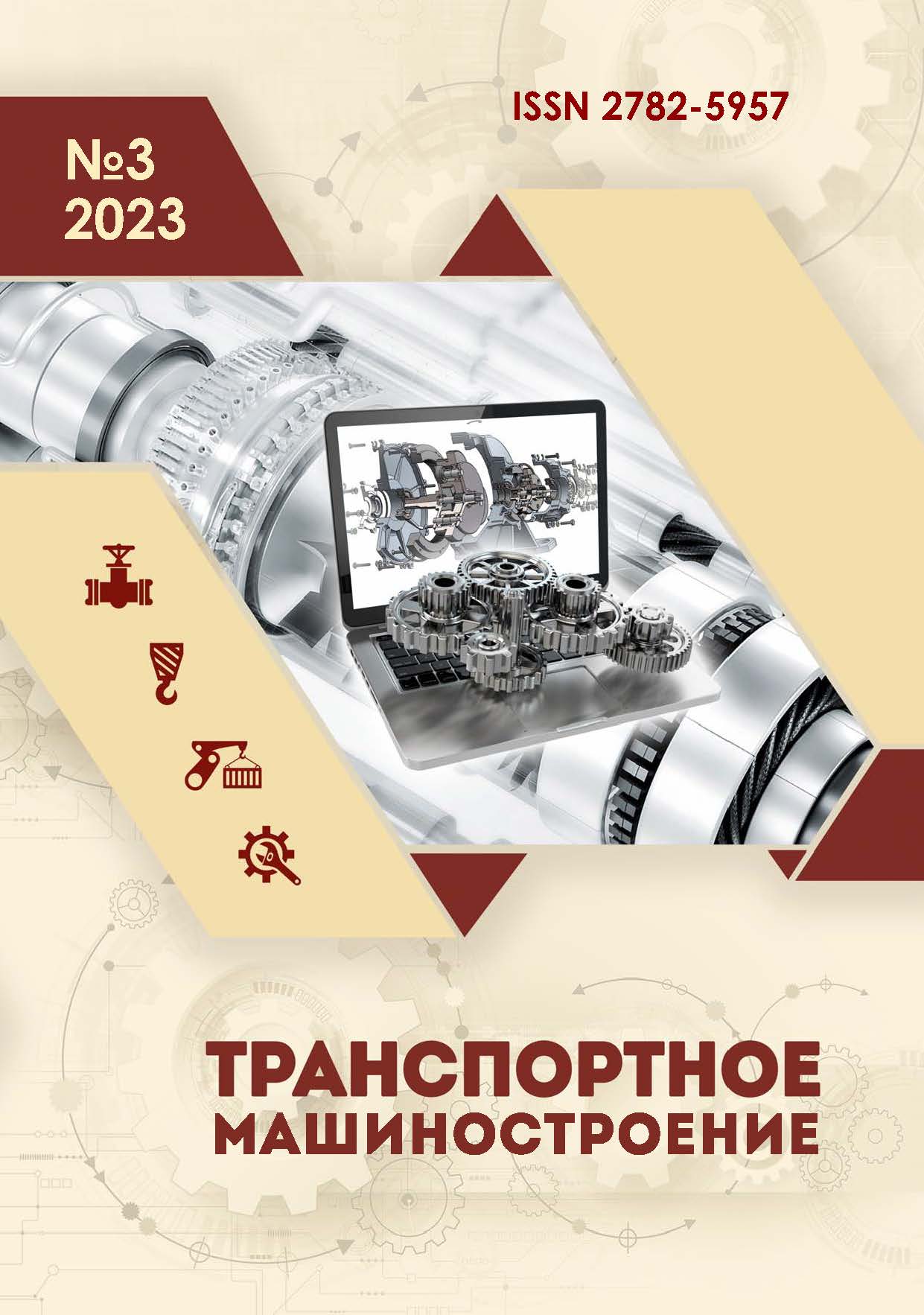Volgograd, Volgograd, Russian Federation
Volgograd, Volgograd, Russian Federation
2.5.6
628.1
344
The study objective is to identify modern production technologies used at almost all phases of the life cycle. To achieve this objective, there have been analyzed and reviewed papers and foreign studies published mainly within 2016-2020 in journals covered by SCOPUS and WoS indexing services, as well as studies of Russian scientists over the past ten years, which are indexed in the above-mentioned international services, as well as in the national RSCI system. The references analyzed in this paper prove that additive technologies are inferior to combined (additive-subtractive, additive-subtractive-hardened, etc.) technologies from the point of view of obtaining high-quality products at the present stage of production development. Conclusions: it is proposed to include the stage of capital repairs and updating of the general model at the stage of modeling the life cycle of machine-building products, which can be the right direction for choosing the most effective technology regardless of the life cycle phase; the choice of technology for the production stage of a particular product or part should be justified in terms of improving the basic operational properties and increase of the residual resource.
cycle, phases, stage, production, additive-subtractive treatment
1. Ogorodnikova OM. Research function of SAE programs in the open-end SAE/CAD/SAE/CAM technologies. Vestnik Mashinostroeniya. 2012;1:25-31.
2. Dorosinsky LG, Zvereva OM. Information technologies for product life cycle support. Ulyanovsk: Zebra; 2016.
3. Kukhar VD, Malikov AA, Sabinina AL, Ivutin AN. Methods to arrange the life cycle of engineering products. Izvestiya Tula State University. Technical sciences. 2012;12(2):302-314.
4. Fedotova AV, Tarasov VB, Vetrov AN. Granulation of information in modeling the life cycle of complex technical systems. Online journal Naukovedenie [Internet]. 2013;5(18):53 [cited 2022 Nov 18]. Available from: https://naukovedenie.ru/PDF/53tvn513.pdf .
5. Garina IO. Technical and economic aspects of the development and implementation of specialized ontology for product life cycle management in the engineering industry. Russian Journal of Innovation Economics. 2020;10(3):1147-1166. DOI:https://doi.org/10.18334/vinec.10.3.110602
6. Stupnitskiy V, Hrytsay I. Comprehensive analysis of the product's operational properties formation considering machining technology. Archive of Mechanical Engineering. 2020;67(2):149-67. DOI:https://doi.org/10.24425/ame.2020.131688.
7. Abramyan SG, Burlachenko OV, Oganesyan OV, Burlachenko AO. The life cycle management system for the capital construction objects using digital technologies. Bulletin of the Volgograd State University of Architecture and Civil Engineering. Construction and Architecture. Oganesyan O. V. Oganesyan, O. V. Burlachenko, S. G. Abrahamyan, 2020;4(81):429-437.
8. Oganesyan O V. Information (digital) technologies in machine science. The Scientific Heritage. 2020;1(57): 20-24.
9. Chemodurov AN. Application of additive technologies in the production of engineering products. Izvestiya Tula State University. Technical sciences. 2016;8(2):210-217.
10. Simono L, Bois-Brochu A, Blais S. Tensile Properties of Built and Rebuilt/Repaired Specimens of 316L Stainless Steel Using Directed Energy Deposition. Journal of Materials Engineering and Performance. September 2020; Early access. DOI:https://doi.org/10.1007/s11665-020-05087- z.
11. Lui IL Chen IZ, Wang IL. A new method for the subsequent processing of a 316L steel sample obtained by SLM using a multi-layer TiN/TiAlN coating. Rapid Prototyping Magazine. August 2020; Early access. DOI:https://doi.org/10.1108/RPJ-07-2019-0199 .
12. Soshina TO, Plyusnina VA, Soshina OI. Designing a multilayer TiAlN-TiN-TiAlN coating with high tribological propertiesBulletin of PNRPU. Mechanical Engineering. Materials Science. 2022;24(1):21-27. DOI:https://doi.org/10.15593/2224-9877/2022.1.03 .
13. Shugurov AR, Akulinkin AA, Panin AV. Modification of TiAlN coating structure by preliminary Ti-ion bombardment of a steel substrate. Technical Physics. 2016;86(3):91-97.
14. Jeyaprakash N, Yang Ch, Duraiselvam M, Sivasankaran S. Comparative study of laser melting and pre-placed Ni-20% Cr alloying over nodular iron surface. Archives of Civil and Mechanical Engineering. 2020 Feb; 20(1). DOI:https://doi.org/10.1007/s43452-020-00030-4 .
15. Agrawal AK, Chattopadhyaya S, Murti VMSR, Legutko S, Krolchik G. A new method of applying laser coating to worn-out cutting rings of a tunnel boring machine for environmentally friendly reuse. Symmetry-Basel. 2020 March; 12(3). DOI:https://doi.org/10.3390/sym12030471.
16. Yevgenev GB. Russian technologies for creation of Industry 4.0 systems. Part 1. BMSTU Journal of Mechanical Engineering. 2018;8(701):50-63. - DOI:https://doi.org/10.18698/0536-1044-2018-8-50-63.
17. Yevgenev GB. Russian technologies for creation of Industry 4.0 systems. Part 2. BMSTU Journal of Mechanical Engineering. 2018;9(702):18-27. DOI:https://doi.org/10.18698/0536-1044-2018-9-18-27.
18. Yevgenev GB, Kryukov SS, Chastukhin AV. Machining robotic technology systems in mechanical engineering. BMSTU Journal of Mechanical Engineering. 2017;5(686):60-71. DOI:https://doi.org/10.18698/0536-1044-2017-5-60-71.
19. Yevgenev GB. Programming methods of combined additive-subtractive processing. BMSTU Journal of Mechanical Engineering. 2017;4(685):47-56. DOI:https://doi.org/10.18698/0536-1044-2017-4-47-56.
20. Kirichek AV, Solovyov DL, Zhirkov AA. Potentialities in additive-subtractive strengthening techniques. Bulletin of Bryansk State Technical University. 2016;4(52):151-160.
21. Kirichek AV, Solovyov DL, Zhirkov AA, Terekhov MV. Patent No. 2,750,603 C1 Russian Federation, SEC B33Y 10/00 (2021.08); B23K 9/04 (2021.08); B23K 28/02 (2021.08); C21D 7/06 (2021.08); B23K 26/70 (2021.08); B24B 39/00 (2021.08). Device for creating parts with additive-subtractive-strengthening technology: No. 2020129073. 2021 Jun 29.
22. Kirichek AV, Solovyov DL, A Zhirkov AA, Khandozhko AV, Shmat AS, Fedonina SO. Patent No. 2,760,020 C1 Russian Federation, SEC B33Y 10/00 (2021.08); B23K 9/04 (2021.08); B23K 28/02 (2021.08); C21D 7/06 (2021.08); B23K 26/70 (2021.08 ); B24B 39/00 (2021.08). Method of creating parts with additive-subtractive-strengthening technology: No. 2020129876. 2021 Nov 22.
23. Kirichek AV, Fedonin ON, Solovyov DL.Additive-subtractive technologies - effective transition to innovative production. Bulletin of Bryansk State Technical University. 2019;8:4-10. DOIhttps://doi.org/10.30987/article_5d6cbe42004700.14416796.
24. Merklein M, Junker D, Schaub A, Neubauer F. Hybrid additive manufacturing technologies - analysis of potential opportunities and applications. Phys. Procedure. 2016;83:549-559. DOI:https://doi.org/10.1016/j.phpro.2016.08.057.
25. Krasnova EV, Saushkin BP. Hybrid technologies and equipment. RHYTHM of Machinery [Internet]. 2021;4:73 - 83 [cited 2022 Oct 18]. Available from: https://ritm-magazine.com/en/node/9914 .
26. Popov VV, Fleisher A. Hybrid additive manufacturing of steels and alloys. Manufacturing Review. 2020 Jan 7:9. DOI:https://doi.org/10.1051/mfreview/2020005.
27. Yamazaki T. Development of a hybrid multitasking machine: integration of additive technology with CNC machining. Proc. CIRP. 2016;42:81-86. DOI:https://doi.org/10.1016/j.procir.2016.02.193.






